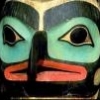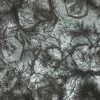Hi everyone, new member here, I'm looking to get more into this hobby, i found these ants and I'm looking for some help with IDing. Here is the information that i have:
1. Collected near santee, San Diego (Southern CA)
2. Collected September 21st
3. The habitat is a sandy dry hillside with lots of shrub
4. Length (from head to gaster) is approximately 5/16ths of an inch.
5. black/reddish in color, slight reddish hue on the abdomen near the thorax. Hairy thorax and semi-shiny
8. The nest was a small mound on a south hillside, not very tall, in reddish sandy soil.



Thank you!
Edited by Gemmawemma, September 27 2016 - 10:29 PM.























